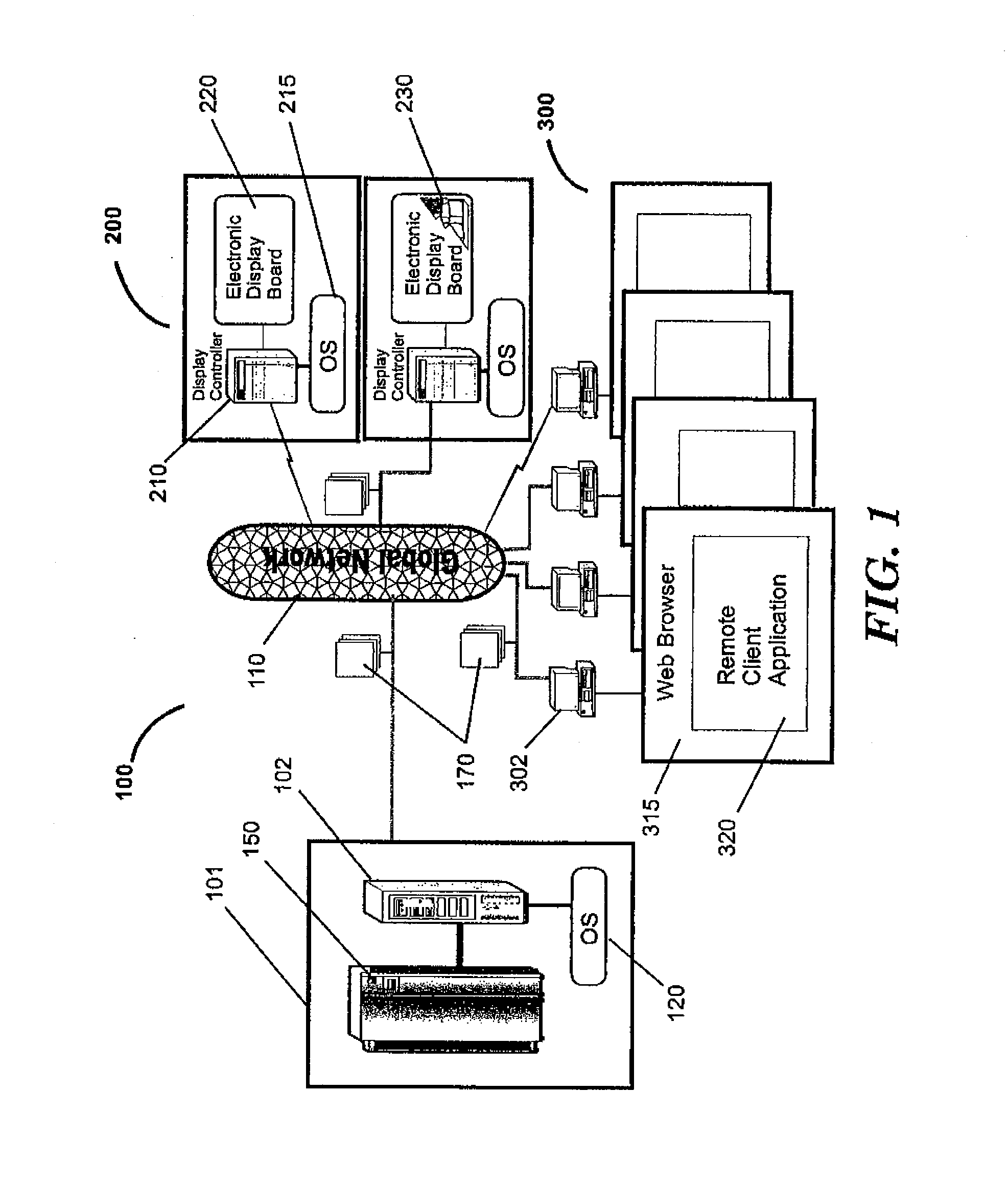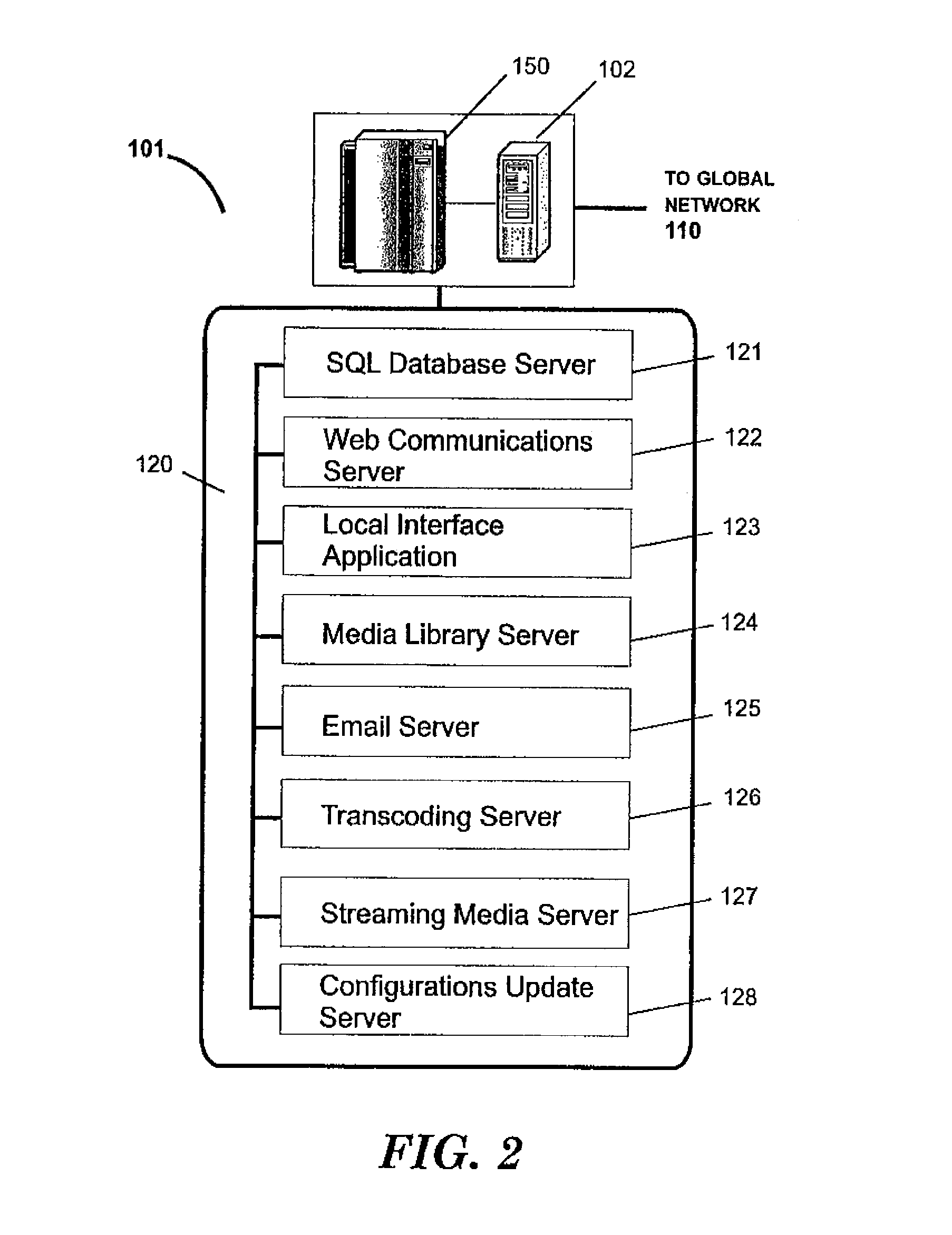Improvements in the methods and practice of producing PEDD display systems, as well as advances in the sophistication and complexity of
graphical content that can be displayed, have created greater acceptance and increasing demand by the public for use of PEDD display systems, as well as a concomitant increase in the volume of images that users want to display.
However, as the art has advanced and the graphical content that can be displayed has become more sophisticated, the
digital data files containing graphical content have increased in size and complexity and the number and types of
digital data file formats (e.g., MOV, AVI, WMF, etc.) used to produce graphical content have proliferated.
These trends create a number of barriers to ready access and use of PEDD display systems that hinder satisfying a burgeoning public demand such as limited cognizance of PEDD display system site, availability and use restrictions; restricted data transfer rates resulting in delayed transmission of large digital data files; increased complexity of
data file management and manipulation and a corresponding increase in burden on
data management resources; expanded need for data storage capacity and maintenance; and similar such practical requirements which must be addressed to ensure public demand can be met and the art may continue to advance.
Unfortunately, prior art PEDD display systems embody means with inherent limitations and disadvantages in overcoming the aforesaid barriers hence failing to provide practical solutions to these and other problems.
This inherent limitation was intentional by design: a principal objective in the design and implementation of dedicated control means is to provide device security by restricting access to a few knowledgeable users.
Moreover, prior art PEDD system control means employed by one device may operate by specialized methods including commands, control functions, protocols, utilities and tools that are unusable or inoperable when applied to other PEDD system control means employed by a different device due to differences in operating platform and
operating system software, support hardware, the technology employed to produce visual images on an electronic
display board, the size and
aspect ratio of the electronic display board, and similar differences.
Additionally, prior art PEDD control means were not designed with the object of allowing ready communication between any two or more PEDD display systems for purposes of
file sharing, or for conversant coordination of exhibition schedules, or for coordination of display content across a plurality of PEDD display systems to optimize presentation of visual images to a viewing party or public.
Nor does the obvious
workaround of simply transferring digital data files containing graphical content prepared for display on a first PEDD display system to a second PEDD display system prove practicable, since discrete programmable control means employed were not designed with the object of easily allowing graphical content
data file transfer between devices and since the inherent differences between PEDD operating characteristics still obtain, with the result that graphical content prepared for use with one PEDD display system may not match the use requirements of a second PEDD display system.
These inherent limitations of prior art PEDD system control means not only present barriers to communication between devices but also exacerbate the difficulties in access and use of PEDD display systems sited in foreign countries, since there is no common set of tools or means useful and efficacious in overcoming the barriers of language, use restrictions, data communications protocols, and the like, with the result that each prior art PEDD display system and discrete control means thereof must be specially adapted for use.
Prior art PEDD display systems have provided no means for on-demand secure access to PEDD display system capabilities by a plurality of users having specialized roles, since this was not an object in the design and manufacture of prior art devices and since proliferation of
workflow tasks and the
resultant specialization of user roles was not foreseen.
A further outgrowth of the greater acceptance and demand for access and use of PEDD display systems is the proliferation of site locations where visual images can be exhibited, which together with proliferation of
workflow tasks and specialization of user roles has produced
workflow restrictions and limitations that impede the ability of PEDD display system operators to offer use to the largest number of potential customers and for PEDD display system users to perform workflow tasks most efficiently and thereby to make use of PEDD display systems most effectively.
Once made, all such changes and modifications must be communicated to PEDD display system users by separate action, such as by telephone or email, since there is no means to automatically notify users that workflow tasks such as requested changes to graphical content data files have been performed.
Moreover, since PEDD display system customers who lease use of PEDD display time, such as advertisers, lack direct access to PEDD display system capabilities they are excluded from the scheduling process and made captive participants in an unreliable change communication process, which leads to misunderstandings and errors that result in iterative actions to complete requested changes and modifications with all the inherent inefficiencies thereof.
The same restrictions and limitations apply to review and approval workflow processes for vetting new graphical content for exhibition, resulting in the same inherent inefficiencies.
It therefore becomes difficult for lease-use buyers to orchestrate coordinated lease-use operation across a plurality of PEDD display system sites, since they may lack knowledge or insight regarding the aforesaid value criteria.
Thus, knowledgeable intermediaries such as sales consultants provide valuable service in transacting agreements between PEDD lease-use sellers and buyers, particularly in effecting coordinated use across a plurality of PEDD display system site locations, but the same restrictions and limitations of access to PEDD display systems applies to them with similarly
resultant inefficiencies in performing workflow tasks.
Additional consideration in the greater acceptance and demand for access and use of PEDD display systems is the lack of automated means to acquire PEDD
device status and operating history such as current configuration, run-time and error logs, audit trails, and similar data for purposes of generating operational and status reports or identifying service issues.
The current art provides for such reports in some instances but each such report must be separately and manually produced at the request of the lease-use customer by the PEDD display system owner / operator, who may charge a service fee, and which may impose significant time and
cost burden on lease-use customers particularly in cases of coordinated use across a plurality of PEDD display system site locations.
Such imperfect reporting means in the prior art makes it difficult for lease-use customers to ensure that graphic content scheduled for exhibit on any given PEDD display system actually occurred according to agreement with expected value received.
As a result, workflow processes in the creation, modification, approval and exhibition of
graphical display content are slow and inefficient; means to organize PEDD display system users into classes or groups based on a common set of goals, or on specialized roles and tasks, or on a coordinated
task management methodology is absent; PEDD display
system time scheduling and use tasks are unnecessarily difficult to perform; broadcast of time-critical messaging is delayed; coordinated use across a plurality of PEDD display system site locations is unnecessarily complicated; the transaction of agreements between lease-use buyers and sellers is impeded; and PEDD display system operational and status reports are difficult to acquire and burdensome to process.
 Login to View More
Login to View More  Login to View More
Login to View More 


